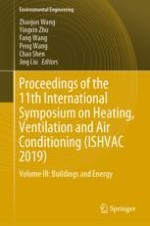2020 | OriginalPaper | Chapter
Influence of Inlet Turbulent Characteristics on CFD Predictions of Indoor Flow Field and Ventilation Performance
Authors : Qiong Guo, Xiangzhe Meng, Haidong Wang
Published in: Proceedings of the 11th International Symposium on Heating, Ventilation and Air Conditioning (ISHVAC 2019)
Publisher: Springer Singapore
Activate our intelligent search to find suitable subject content or patents.
Select sections of text to find matching patents with Artificial Intelligence. powered by
Select sections of text to find additional relevant content using AI-assisted search. powered by
